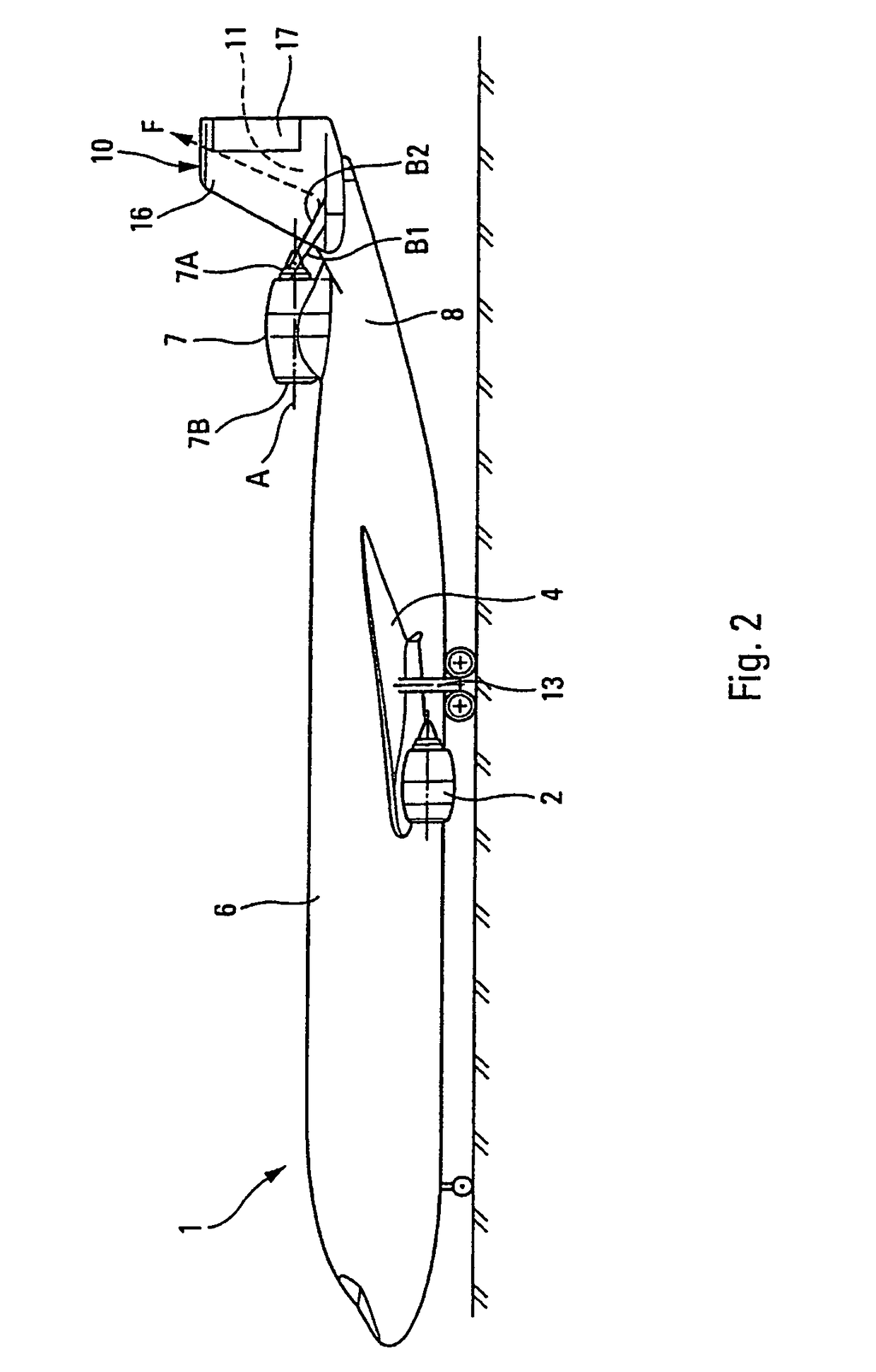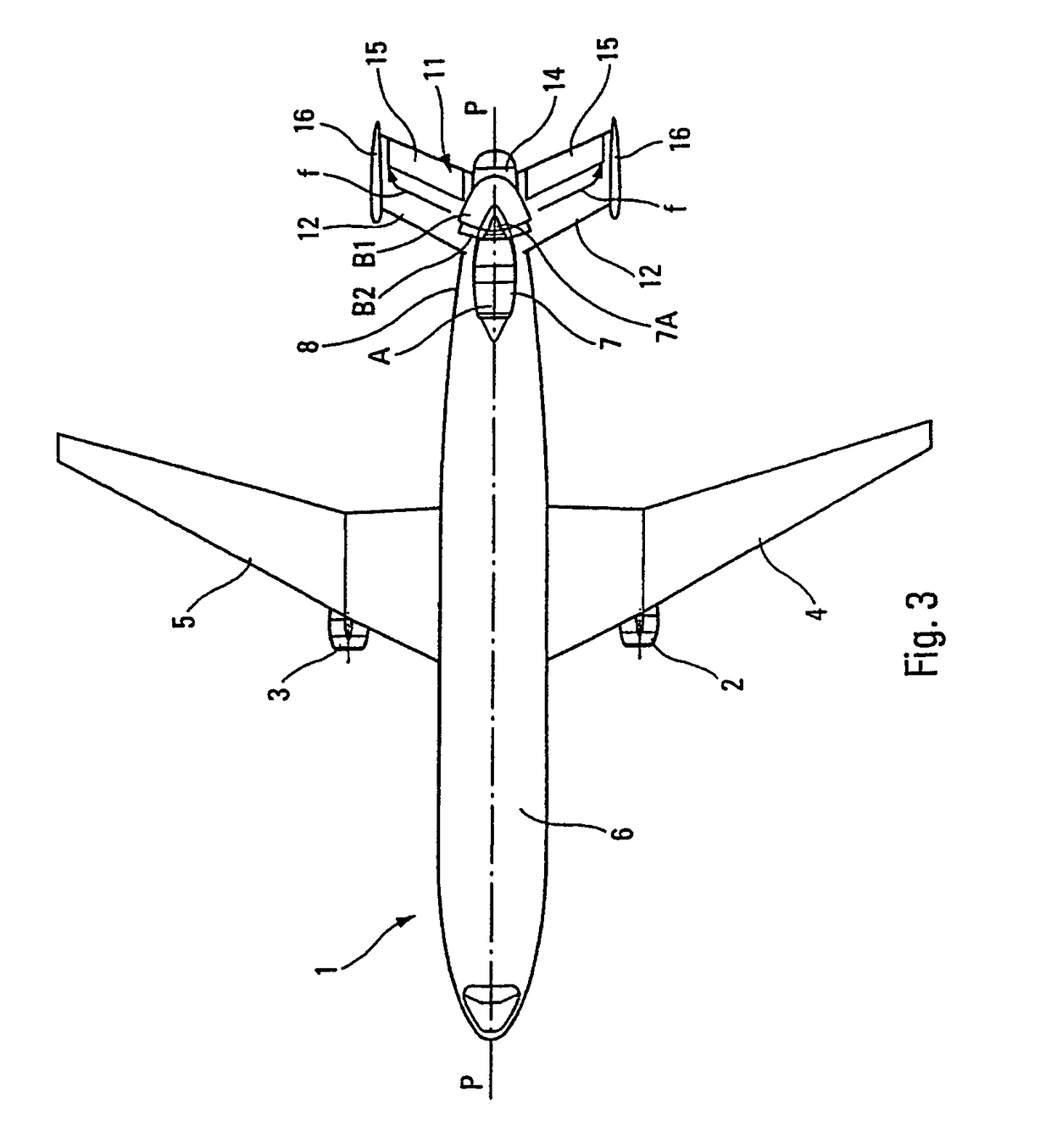Multi-engine aircraft
a multi-engine aircraft and engine technology, applied in the direction of lighter-than-air aircraft, power plant exhaust arrangements, transportation and packaging, etc., can solve the problems of increasing the mass of the third engine, increasing the noise generated by the engine, and generating considerable noise, so as to reduce the previous acoustic problems, less heavy, and less noisy
- Summary
- Abstract
- Description
- Claims
- Application Information
AI Technical Summary
Benefits of technology
Problems solved by technology
Method used
Image
Examples
Embodiment Construction
[0022]In the exemplary embodiment represented in FIGS. 1 to 4, the aircraft 1 comprises three engines (of the turbofan type), two 2, 3 of which are arranged below the wings 4, 5 of the fuselage 6, respectively, symmetrically with respect to the vertical longitudinal plane of symmetry P of said fuselage, and the third 7 of which is provided at the rear part 8 of the fuselage, containing the horizontal and vertical rear tail sections 9 and 10, along the longitudinal plane P. The reference number 13 represents the customary landing gear of such an aircraft.
[0023]As is shown more specifically in FIGS. 1, 4 and 5, the horizontal 9 and vertical 10 tail sections define, according to the invention, a channel 11 which is, in this example, approximately U-shaped and which is geometrically symmetrical with respect to the longitudinal plane P of the fuselage 6. The third engine 7 is then arranged in the plane of symmetry of the channel, that is to say the plane P, and is advantageously arranged...
PUM
 Login to View More
Login to View More Abstract
Description
Claims
Application Information
 Login to View More
Login to View More - R&D
- Intellectual Property
- Life Sciences
- Materials
- Tech Scout
- Unparalleled Data Quality
- Higher Quality Content
- 60% Fewer Hallucinations
Browse by: Latest US Patents, China's latest patents, Technical Efficacy Thesaurus, Application Domain, Technology Topic, Popular Technical Reports.
© 2025 PatSnap. All rights reserved.Legal|Privacy policy|Modern Slavery Act Transparency Statement|Sitemap|About US| Contact US: help@patsnap.com



